There are hundreds of cathedrals in the world. Many seem to look alike. After seeing a dozen of them you have a problem is remembering which one is which. And then there are those, which seem totally unique. Once you see them – you recognise them immidiately. The cathedral of Orvieto certainly belongs to the latter group.
Orvieto is a town in central Italy, halfway between Florence and Rome. It is located majestically on a sleeping vulcano.
Orvieto was on our way to the South of Italy and unfortunately we had limited time to visit it. It was a beautiful sunny summer afternoon and we were delighted to stretch our legs after a long ride. We walked through the old town and marvelled at the Baroque and Classicist mansions we were passing by. Our main aim of the visit was of course the cathedral. When we entered the piazza, the late afternoon sun was shining directly on the golden mosaic of the front wall of the cathderal. A breathtaking view.
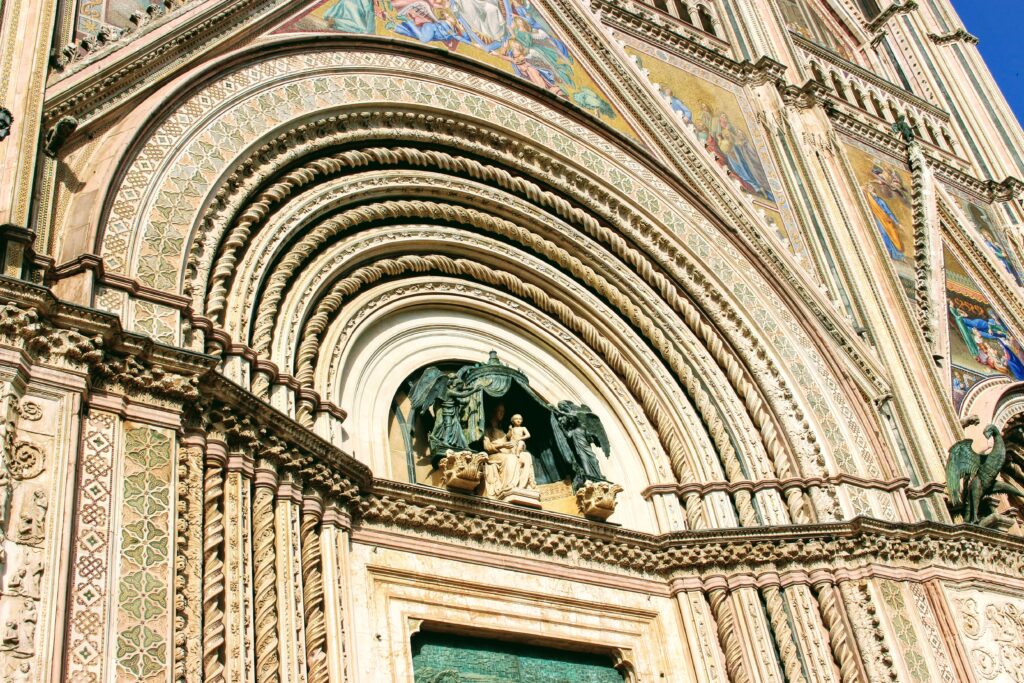
We entered the cathedral and the difference between the sun-filled piazza and the cold and dim interior was striking. It was like entering a different, more sacred world. Exactly like the constructors of this cathedral dreamed of. The art of the Orvieto cathedral is indeed top world class. The mosaics are amazing in their quality and details. We could have spend hours there, if not the fact that we still had 300 km to drive that day.
History of Orvieto
Orvieto was once a major center of the Etruscan civilisation. As it is situated on a steep volcanic hill and overlooks the region, it was considered unconquerable. Nevertheless it was annexed by the Romans in 3rd century BC, but not in battle.
After the fall of Ancient Rome, it’s impenetrable location became vital during the raids of the barbarians. For safety reasons the episcopal seat was transferred from the nearby town of Bolsena to Orvieto which secured it’s prime importance in the region. The city was held by the Goths and by the Lombards before its self-governing commune was established in the tenth century. In this commune consuls governed under a feudal oath of fealty to the bishop.
Orvieto’s relationship with the papacy has been a close one for a long time. In the tenth century Pope Benedict VII visited the city of Orvieto with his nephew, Filippo Alberici, who later settled there and became Consul of the city-state in 1016. By the thirteenth century, three papal palaces had been built.
The town was situated on an important trade route from Florence to Rome, which helped it to grow and become wealthy. Orvieto became one of the major cultural centers of its time when Thomas Aquinas taught at the studium there. A small university had its origins in a studium generale that was granted to the city by Pope Gregory IX in 1236. After teaching in Orvieto Aquinas was called to Rome in 1265 to serve as papal theologian and his career developed there elsewhere.
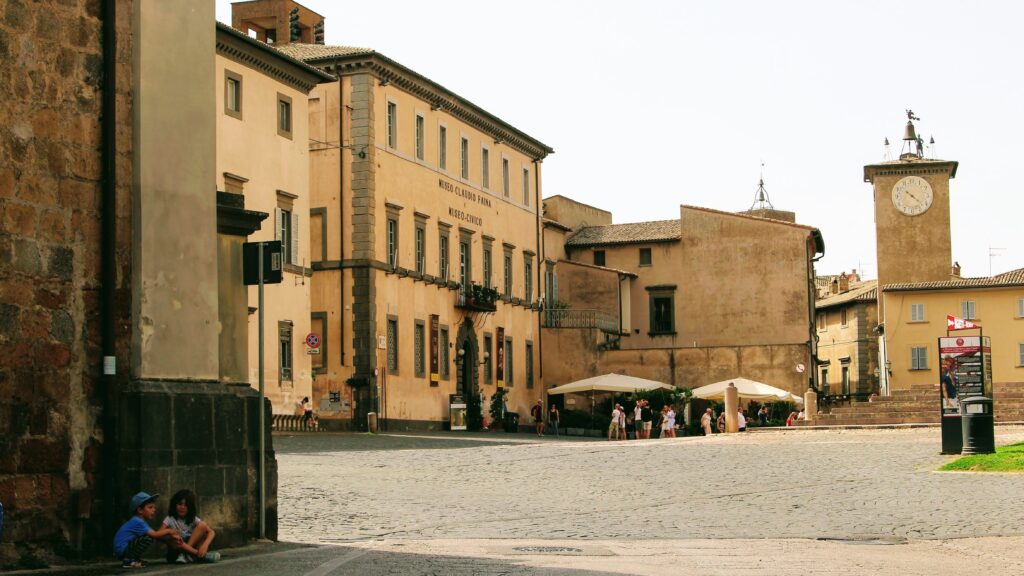
Corporal of Bolsena
In 1263 in a nearby town of Bolsena a Bohemian travelling priest was having doubts about the Christian doctrine of transubstantation, which means the incarnation of Christ in the Host at consecration. According to a legend, as he was celebrating Mass in the local St Christina’s church, the Host began to bleed profusely at the moment of consacration and stained the priest’s robes. The priest no longer doubted the mystery and the Church established the Feast of Corpus Christi which is celebrated within the Catholic world till this day. The robe of the priest covered with blood became a relic.
Construction of the duomo
On 15 November 1290, Pope Nicholas IV ordered a cathedral to be built in Orvieto in order to commemorate the miracle in Bolsena. The pope laid the cornerstone for the present building and dedicated it to the Assumption of the Virgin, a feast for which the city had a long history of special devotion. The cathedral was supposed to be built in the romanesque style, which was typical for that period.
The design of the cathedral has often been attributed to Arnolfo di Cambio (the architect of the cathedral of Florence), but the prevailing modern opinion is that the master mason was an obscure monk named Fra’ Bevignate from Perugia.
Construction continued slowly until 1309, when the Sienese sculptor and architect Lorenzo Maitani was commissioned to work on the church and solve several issues concerning the load-bearing capabilities of the building, especially of the choir. He substantially changed the design and structure of the building, increasing the similarity of the building to Siena Cathedral. The architecture of both buildings sometimes is classified as a substyle of Gothic architecture known as the Siennese Gothic style.
Gothic architecture
Maitani strengthened the external walls with flying buttresses, which proved later to be useless. These buttresses were eventually included in the walls of the newly built transept chapels. He rebuilt the apse into a rectangular shape and added a large stained-glass quadrifore window. Starting in 1310 he created the current façade up to the level of the bronze statues of the symbols of the Evangelists. He also added much of the interior. Maitani died in 1330, shortly before the completion of the duomo and was succeeded by his sons.
In 1347 Andrea Pisano, the former Master of the Works of the Florence Cathedral, was appointed the new Master of the Works in Orvieto. He was followed in 1359 by Andrea di Cione, better known as Orcagna. The beautiful mosaic decoration and the rose window are attributed to him. The Sienese architect Antonio Federighi continued the decoration of the façade between 1451 and 1456, adding some Renaissance modules. In 1503 Michele Sanmicheli finished the central gable and added the right spire, which was finished by Antonio da Sangallo, Junior in 1534.
Final touches to the façade were made by Ippolito Scalza by adding the right pinnacle in 1590 and the left in 1605–1607. All in all, the succeeding architects kept a stylistic unity to the façade.
Facade
The most known part of this cathedral is its façade. It is one of the great masterpieces of the Late Middle Ages. The most exciting and eye-catching part is its golden frontage, which is decorated by large bas-reliefs and statues with the symbols (Angel, Ox, Lion, Eagle) of the Evangelists created by Maitani and collaborators (between 1325 and 1330) standing on the cornice above the sculptured panels on the piers. In 1352 Matteo di Ugolino da Bologna added the bronze Lamb of God above the central gable and the bronze statue of Saint Michael on top of the gable of the left entrance.
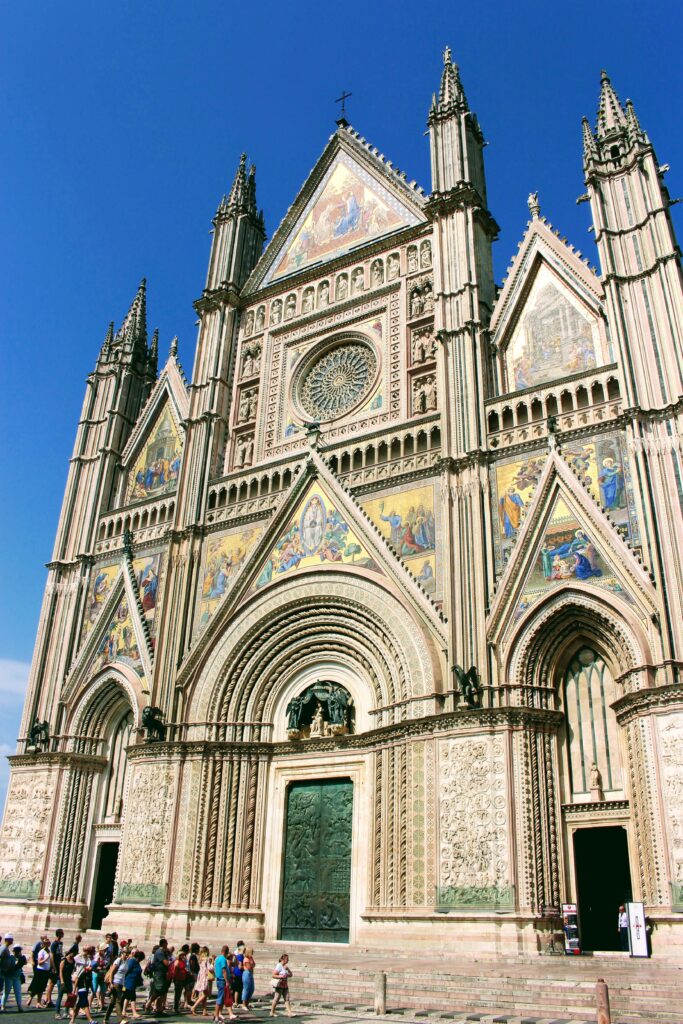
The bas-reliefs on the piers depict biblical stories from the Old and New Testament. They are considered among the most famous of all 14th-century sculpture. They depict the Book of Genesis, the Tree of Jesse, episodes from the lives of Jesus and Mary and the Last Judgement.
Above this decoration are glittering mosaics created between 1350 and 1390 representing major scenes from the life of the Virgin Mary, from the “Nativity of Mary” to the “Coronation of the Virgin Mary”. In the niches above the rose window stand the twelve apostles, while in niches on both sides twelve Old Testament prophets are represented in pairs. This is typical for French Gothic cathedrals and is not common in Italy.
The cathedral’s side walls, in contrast to the façade, are more simply furnished with alternating layers of local white travertine and blue-grey basalt stone.
Chapel of the Corporal
If you are a fan of frescoes, then you ought to come to the chapel of the Corporal. It is decorated with frescoes depicting on the left wall the history of the Eucharist and on the right wall miracles concerning the bleeding host throughout church history. They were painted between 1357 and 1363. The aedicule-shaped tabernacle on the altar was designed in 1358 by Nicola da Siena and finished by Orcagna.
Chapel of the Madonna di San Brizio
This chapel was a fifteenth-century addition to the cathedral. It is almost identical in structure to the Chapel of the Corporal. The construction of this chapel (also known as the Cappella Nuova and Signorelli chapel) was completed in 1444.
The famous Fra Angelico began the decoration of the vault of the chapel in 1447. He painted only two sections: Christ in Judgment and Angels and Prophets and was summoned in the same year to the Vatican by Pope Nicholas V. After being abandoned for about 50 years, the decoration of the rest of the vault was awarded to Luca Signorelli in 1499. He added the scenes with the Choir of the Apostles, of the Doctors, of the Martyrs, Virgins and Patriarchs.
His work pleased the board and they assigned him to paint frescoes in the large lunettes of the walls of the chapel. Work began in 1500 and was completed in 1503. These frescoes in the chapel are considered the most complex and impressive work by Signorelli. He and his school spent two years creating a series of frescoes concerning the Apocalypse and the Last Judgment.
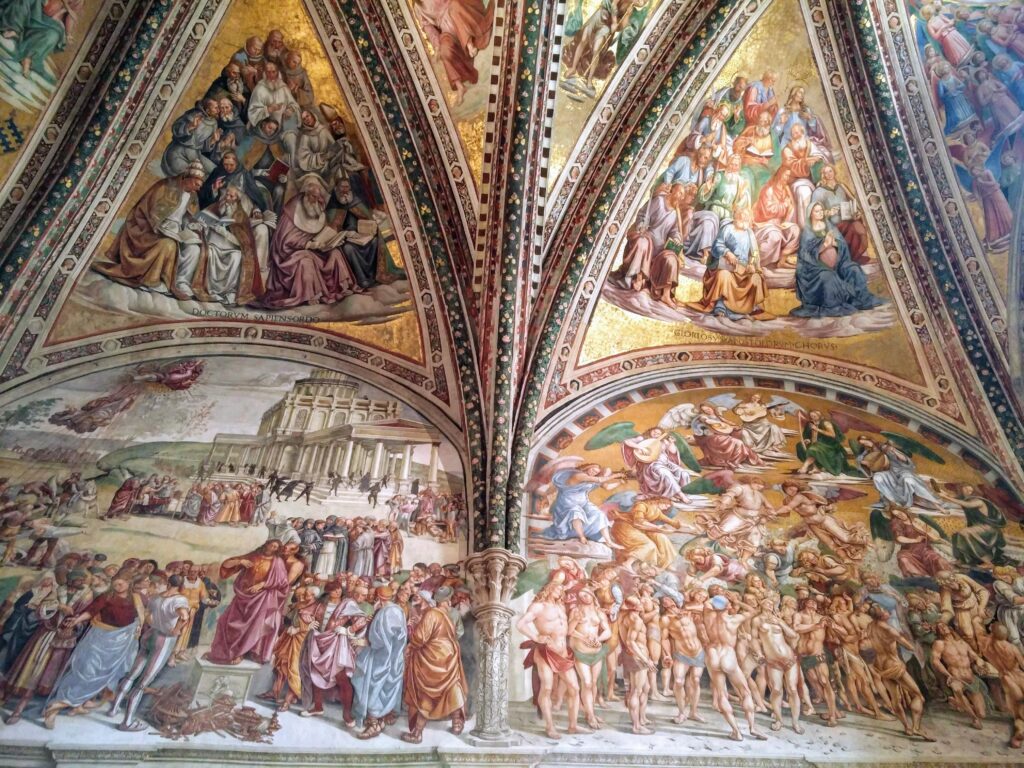
* * *
After such a great feast for the eyes, it was high time to have a feast for the stomach as well. Just opposite the cathedral there was a gelateria, where we had the first real italian gelato that summer. We had a perfect view of the facade and shelter from the heat while enjoying our desserts. Gelato was good, but still way behind our favourite gelateria Linnus Jazz in Faenza, but that’s another story, you can get to know it here. Meanwhile, just enjoy the view, just like we did!
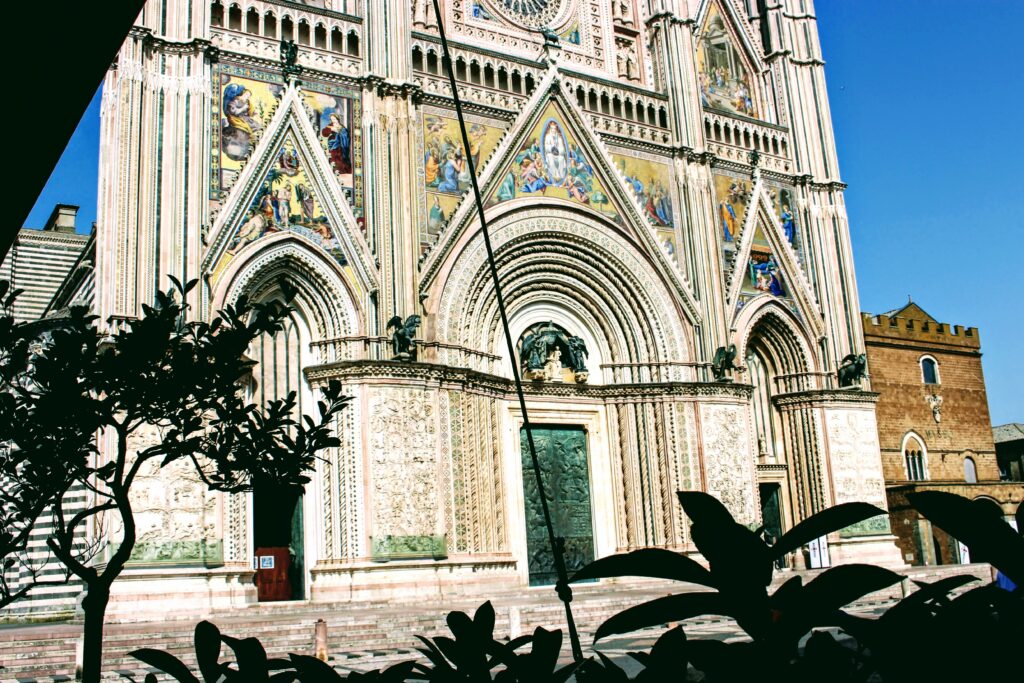
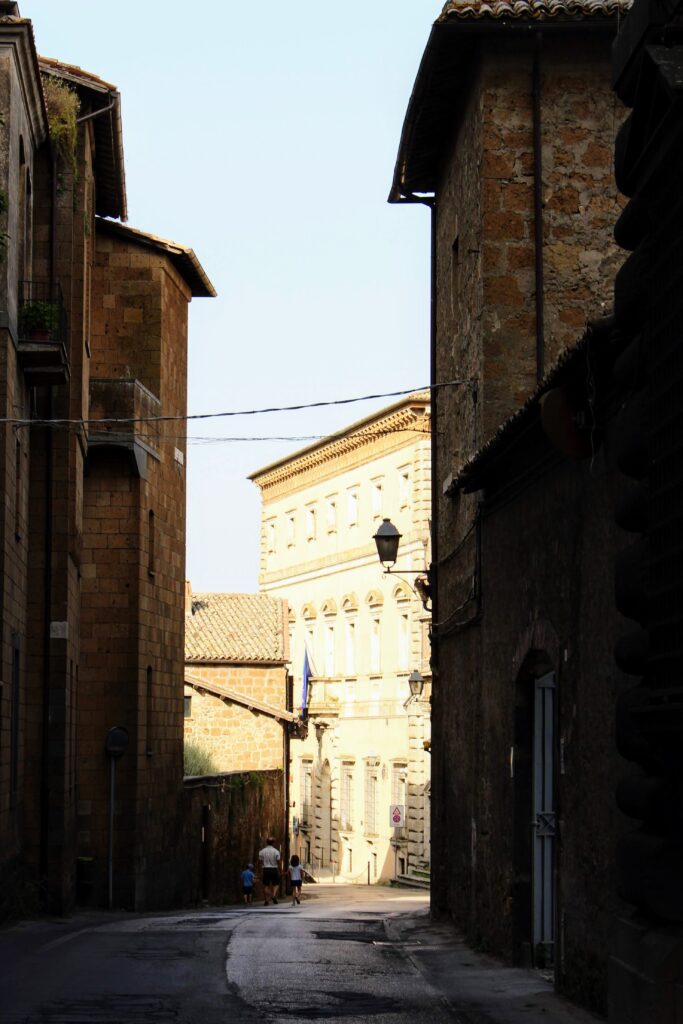
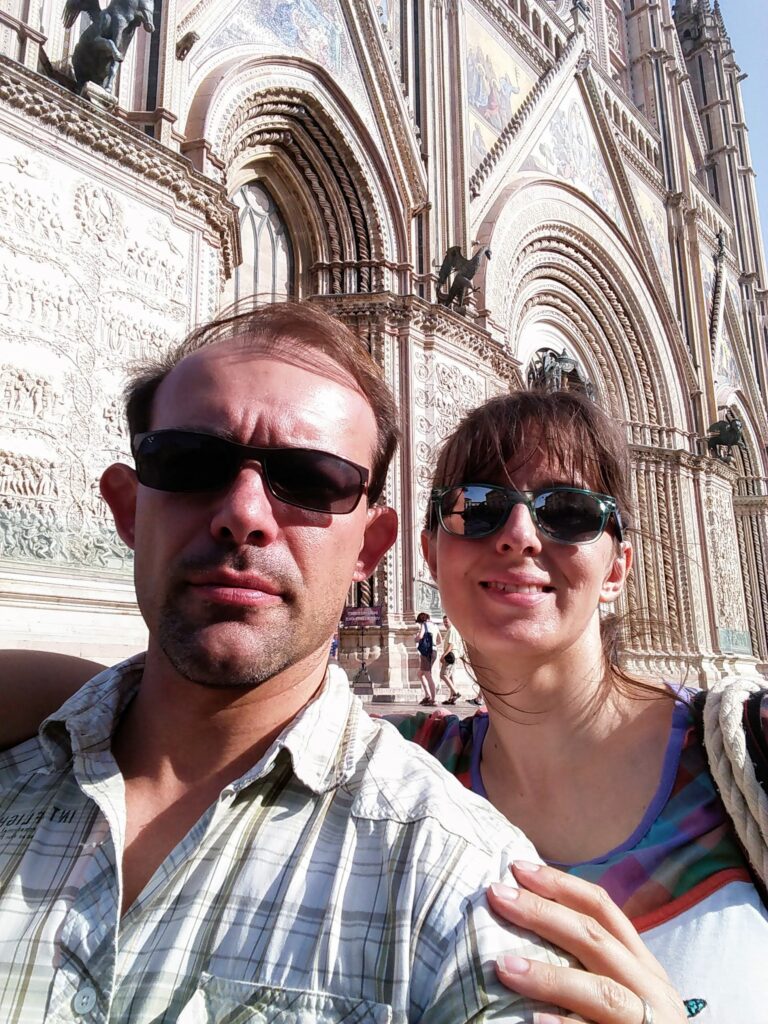
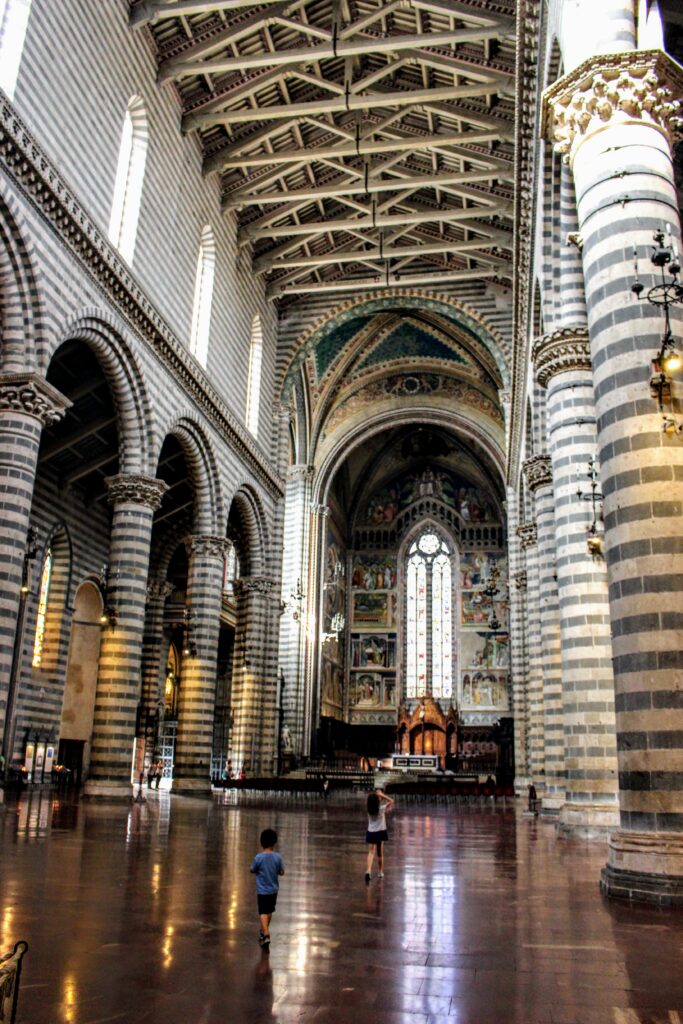
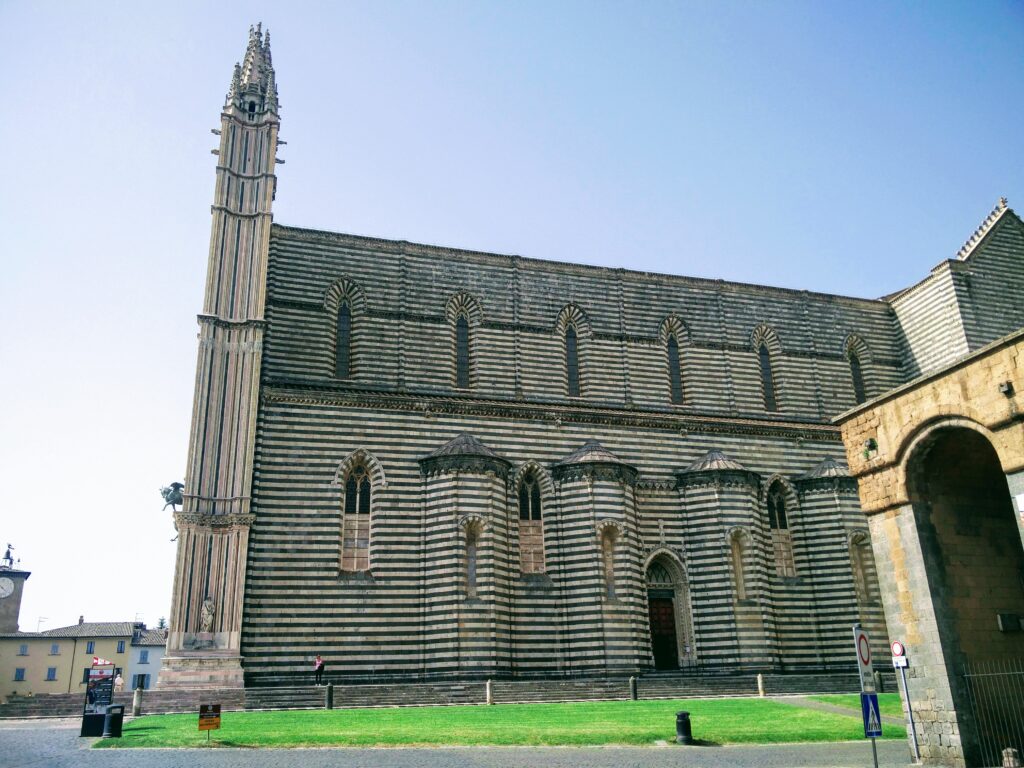

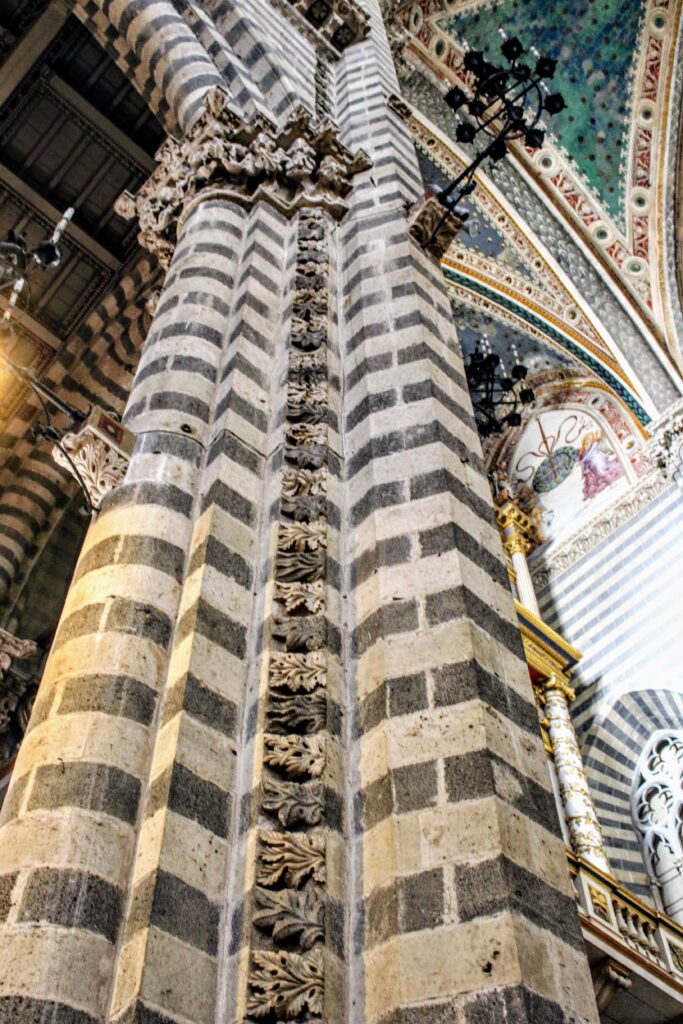
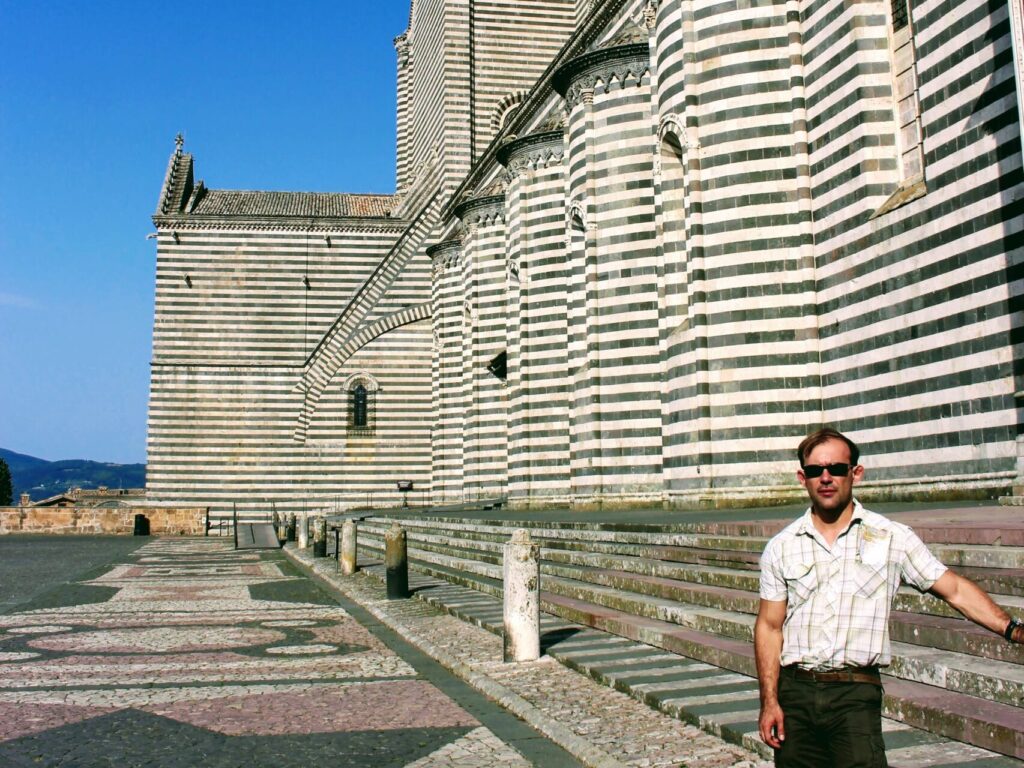


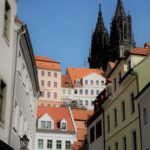


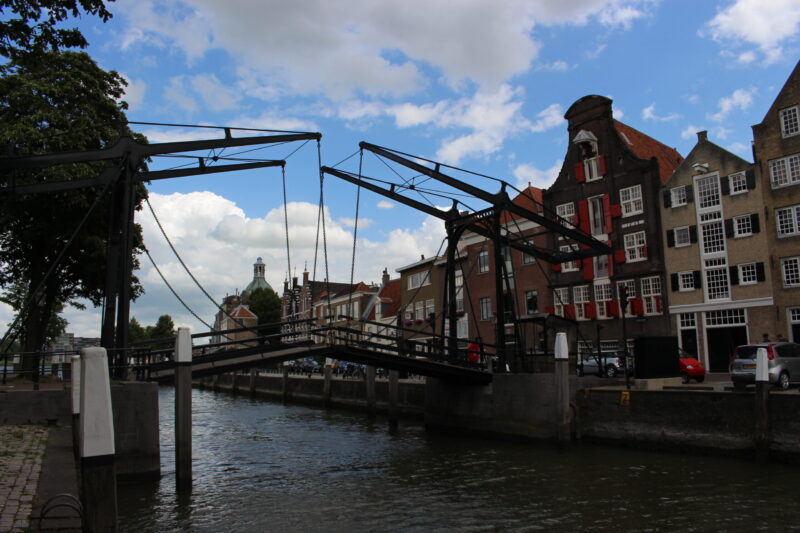

Good post. I be taught one thing more difficult on completely different blogs everyday. It is going to all the time be stimulating to learn content from different writers and practice just a little something from their store. I’d desire to make use of some with the content on my blog whether or not you don’t mind. Natually I’ll provide you with a hyperlink on your net blog. Thanks for sharing.